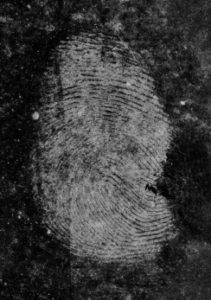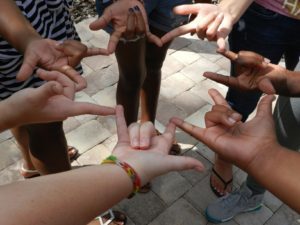Chloe Holiday's Blog, page 17
October 31, 2020
Like a Hole in the Head

My bad! I’d meant the stele to be the Last Archaeological Thing, but I completely forgot about the tumi! There’s no way I can leave that off, especially with Halloween tonight!
A tumi is named for the Quecha word for “knife” and refers to the half-moon bladed knives used by the Pre-Columbian people of the Peruvian Andes. They were used as kitchen knives and tools, also for medical procedures and sacrifices, and also as ceremonial implements. They are most commonly associated with Pre-Incan or Incan cultures. Many were elaborately decorated with semi-precious stones and made of metals too soft to hold an edge for long. Many were found in graves. The ones used as tools were less ornate, measured almost 17 inches long, and weighed over two pounds.
Ceremonial uses included the sacrifice of a white or black llama by the High Priest at the annual Sun Festival, to open the belly, pull out the entrails, and use these as a way to predict the future. Human sacrifices are also depicted in paintings. These tumi were ornate and often featured a “bird-man” figure of Naylamp, the founder of the Sican culture, who eventually flew into the sky.
They were used in trephination, which involved drilling a hole in the skull, perhaps to cure madness or seizures. Once can imagine a high mortality rate resulted, but there are some skulls which showed evidence of healing, so at least a few people survived it! Today, a trephination is a stop-gap measure for an elevated intracranial pressure.
The tumi is the national symbol of Peru, and to hang one on the wall brings good luck. A tumi is often featured in tourist trinkets like keychains, but here’s a link to the real deal:
https://en.wikipedia.org/wiki/Tumi#/media/File:Ceremonial_Knife_(Tumi).jpg
Happy Halloween!
October 24, 2020
The Oldest Song in the World

Hint: It’s not “The dog ate my homework!”
Here’s my final, way cool snippet of archaeological info I learned from writing Submerged Hopes. Although this April, an Assyrian clay tablet was reconstructed, representing a near-complete ancient song from 3400 years ago, the oldest complete musical composition is the Seikilos epitaph, which dates from the first or second century B.C. and was engraved on a cylindrical tombstone, or stele. This artifact served as the inspiration for the piece in Submerged Hopes.
It was first discovered in 1883 in Turkey, and the base was partially cut off so it could stand straight, to serve as a pedestal for a potted plant belonging to the railway director’s wife. The symbols and lines incised above the lyrics indicate the melody. It’s a brief, poetic entreaty to enjoy life, because it’s ephemeral, and was a dedication from Seikilos to his wife. It resides in a museum in Copenhagen now. If you check the first link below, halfway down on the right is a recording of the song, in the Greek dialect of the time.
Honorable mentions include a couple of Delphic hymns from 158 B.C., the Oxyrhynchus hymn (the oldest known Christian Greek hymn, from an Egyptian papyrus), The Phos Hilaron (often called Lumem Hilare, the lamp-lighting hymn, the oldest complete hymn that is still widely used by the Greek Orthodox Church today though it dates from the early 3rd century B.C.), Te Deum, most likely written by Saint Ambrose and Saint Augustine in 387 CE (and still used by the Roman Catholic Church), and lastly, Sumer Is Icumen In (also called Summer Cannon or Cuckoo Song, the oldest existing English song and the first recorded use of the word “fart.”) It dates back to medieval England in the mid-13th century.
Here’s a link to the Seikilos epitaph:
October 16, 2020
The World’s First Analog Computer–from 150 B.C.!!!!

One thing I love about writing is the research—I expect to learn something when I read, even for fun, and it’s those details that make the settings come alive. Since Submerged Hopes is about an archaeologist, the work includes references to certain artifacts, which are based—like the sex pots—in real life. One of these is the world’s earliest analog computer, the Antikythera mechanism.
The Antikythera mechanism is a hand-held orrery, a representation of the solar system which could be used to predict moon phases, the positions of planets, eclipses, etc. It could also predict the dates of the Olympic games decades in advance. It’s named for the Greek island where it was discovered in 1901, just northwest of Crete, where my novel is based.
At that time, a crew of Greek sponge divers and fishermen found themselves becalmed, and passed the time in anchorage there, diving for sponges. One diver went down and signaled in a panic to be pulled up. He described heaps of rotting corpses and horses strewn on the seabed. The captain assumed he was suffering confusion from nitrogen narcosis, and descended himself. He surfaced again with a bronze arm, and they spent the remainder of the time bringing up artifacts.
The device was unprepossessing in appearance: a lump of bronze and wood fused together, and was chucked to the side in favor of a huge number of statues, jewelry, and other treasures thought destined for Rome for a wealthy collector or perhaps a Triumph for Julius Caesar. A year later, an archaeologist discovered a five-inch gear embedded in the piece, which subsequently broke into three pieces. Since then, 82 fragments have been identified, including 37 gears.
It was able to predict the positions of the planets, Zodiac signs, the sun, eclipses, the moon’s eccentric orbit, decades ahead of time, down to the time of day. The knowledge was lost in antiquity, and nothing to rival it was seen until the fourteenth century!
The wreck itself yielded a huge number of statues and other treasures, as well as the only “war dolphin,” a 220-pound lead ball tipped with an iron spike, which would have been dropped from a yardarm through the hull of an enemy’s ship, and a 2,000-year-old skeleton, well preserved enough that DNA analysis might be possible.
You can read more about the mechanism and the wreck here:
https://en.wikipedia.org/wiki/Antikythera_mechanism https://en.wikipedia.org/wiki/Antikythera_wreck
October 10, 2020
Sex Pots are a Thing?
 Ancient Sex Pots!
Ancient Sex Pots!
The photo isn’t a sex pot, since those pics are NSFW! Today I’m sharing what I learned about the erotic ancient pottery of Peru, while writing the archaeology aspects of Submerged Hopes.
Submerged Hopes features a Deaf Greek archaeologist and a Navy diver. Part of their discussion involves sex pots, which are unique drinking vessels from the Moche culture of ancient Peru, which flourished from A.D. 100 to A.D. 800. They are so named because they depict an astonishing variety of highly detailed sexual acts, definitely NSFW, so the teapot above is a placeholder (see the link below).
These are also called “stirrup pots” because of the shape of the handle, and held water or the corn beer called chicha. Subjects were most often human, though sometimes skeletons or animals are depicted. They were so shocking to those who unearthed them that many of the pots were smashed as “obscene,” and those which survived were assumed to be simply pottery porn or erotica.
The pots were found in tombs, and the presence of certain, ahem, soft tissue parts (!!) on skeletons has led to the more recent idea that the pots were not meant to titillate, but to serve as a link to ancestors and invoke the powers of fertility and continuity.
Here’s a link to the one featured in the story (NSFW or for those below 18): https://sudamerikat.files.wordpress.com/2015/01/katherines-lima-photos-1-1-and-1-2-2015-040.jpg
If you want to see more, Google “Moche sex pot,” but you won’t be able to unsee them!
October 2, 2020
Sticky Fingers

My about-to-be-released novel, Submerged Hopes, contains one very memorable handprint, but also an instance of the use of fingerprints, or dactyloscopy, during investigation of a crime. Here’s what I learned in my research.
Fingerprints are unique to the individual—even identical twins have different fingerprints. There are basic fingerprint patterns of friction ridges into loops, whorls, or arches, though it’s the tiny variances, called minutiae, which are used to identify a specific set of prints. Modern prints are categorized with a numerical calculation based on the presence of whorls on five fingers. Do other species have fingerprints? Yes—in fact, it’s said to be difficult to tell the difference between the fingerprints of a human and a koala, even with an electron microscope! Very rarely, people are born with a genetic defect that prevents their friction ridges from forming. Thus, people with adermatoglyphia do not have fingerprints.
The use of fingerprints for identification is age-old; the ancient Babylonians pressed fingers into clay to record business transactions, and the Chinese did the same with paper and ink. Fingerprints weren’t used to detect criminals until the 19th century, however. A police officer in Buenos Aires named Vucetich was the first to use them in a murder case in 1892, involving two young boys. Suspicion had fallen on the mother’s love interest, but the prints showed that the mother herself was guilty. Over time, the technique spread and databases grew. In the 1980s, the Japanese National Police Agency started AFIS, or Automated Fingerprint Identification Systems. It’s now IAFIS (integrated AFIS), which now allows law enforcement around the world to check fingerprints against millions on record almost instantaneously.
When I was getting my security clearance, the process was old-school: the technician rolled each of my fingers first in ink, then across a heavy paper to get an impression, and finally, had me do a “touch down” of all of them at the bottom of the record. These are called exemplar, or known, prints. Nowadays, a digital scanner does the job with less mess.
Fingerprints left on an object can be visible, or latent. The latter can’t be seen with the naked eye, but are composed of miniscule deposits of skin oils and cells. Plastic prints are impressions left in soft materials like soap.
The techniques for acquiring prints at a crime scene depends on whether the surfaces touched are porous or non-porous. The latter can be picked up by “dusting for prints” with a brush and fine powder, then “lifting” the prints with clear tape. However, the aqueous portion of a print may dry fast, making this technique less useful for older prints.
Criminals often try to wipe off their prints; a few have had their fingers burned or otherwise altered, like Alvin “Creepy” Karpis. The lack of prints doesn’t necessarily prove dirtbaggery, however. Sometimes, elderly people have fading prints because the skin thins with age.
Water has an adverse effect on fingerprint retention. The longer an item is submerged, and the higher the water temperatures, the more difficult it is to detect prints, and saltwater is worse than freshwater. The techniques used for detection are as follows: black powder, which uses carbon-based fine powders to cling to residues, SPR or small particle reagent, a suspension of molybdenum disulfide in detergent, which adheres to fatty residues forming a gray deposit, and CA, or cyanoacrylate (super glue) fuming, in which the vapors polymerize on the fingerprints. In the interest of accuracy, I researched dozens of articles, and the best one was in the Egyptian Journal of Forensic Sciences by Madkour, et al in 2017.
Madkour’s team had volunteers touch CDs, glass, and knife blades, before immersing the items in fresh and salt water tanks for various durations, then tested retrieval methods, scoring prints from 1-5 (no print, visibility ranging from bad to poor to good to very good). The CA technique was superior, and prints lasted longer on metal, disappearing fastest on plastic. Prints lasted longer in freshwater. Nonetheless, 60% of prints were still rated “good” after ten days in salt water!
Someday, I’ll have to write a story about an unstoppable criminal duo: an elderly woman and her nefarious trained koala sidekick!
September 26, 2020
Get a Grip: Rock Climbing

While I love a good sports romance, there’s more to the genre than ballplayers, so I enjoyed putting surfing and scuba diving in Submerged Hopes, and rock climbing in New Heights. Here’s what I learned.
Rock climbing was first depicted in Chinese paintings in 200 B.C. The Anasazi cliff dwellers in the American Southwest were thought to be excellent climbers, and mountain climbers used some of the techniques of necessity, yet it wasn’t until the late nineteenth century that rock climbing developed into a sport. The “aid climbing” of the mountaineers, in which equipment was felt to be required, is different from the free climbing of today, in which dynamic techniques utilize the climber’s strength and agility to accomplish the climb, with the equipment used for safety, not upward movement.
Sport climbing is popular enough now that it was slated to be part of the 2020 Summer Olympics, now postponed until next year, and the dizzying film Free Solo grossed over $28 million.
Indoor gyms are popular, but outdoor climbing is much more varied. Bouldering involves climbing on huge boulders, usually less than twenty feet tall. Instead of ropes and harnesses, crash pads are used, as well as “spotters” who stand below, ready to help slow a falling climber and deflect them onto the pads and away from hazards. Crack climbing involves jamming various body parts in long vertical cracks as a means to ascend, while face climbing uses surface imperfections like ridges and bumps. Slab climbing is similar, but the angles are less than vertical. When holds are minimal, smearing is helpful: using the friction of the rubber-shoed foot to keep from sliding. These all utilize other climbers with equipment, harness, and ropes, to help with safety, on belay.
Free base climbing is different in that the climber wears a parachute to activate in a fall. Free soloing means no safety equipment, though deep water soloing is less risky, since it’s done over water deep enough to help cushion impact.
Climbing injuries are common, sometimes death or serious trauma from falls, though minor injuries are more common, ranging from acute problems, like cuts and abrasions or torn calluses, to overuse damage to ligaments and tendons, some of which may require surgery.
Climbing has its own lexicon, more than even surfing. Beta refers to the advice of other climbers with experience on a given route. An on-sight is a climb to the top without receiving beta. When Sarah Ann declines instruction from the Greek man at the wall and still “sends it” or clears the route, it was a flash climb, since she could learn something having watched Carlos fall. When she goes back to conquer the most difficult route after multiple attempts, it’s called “redpointing.”
Climbing is not without controversy; many challenging and beloved destinations are revered by indigenous people. This includes Uluru or Ayer’s Rock in Australia and Devil’s Tower in the U.S. Nowadays, climbers use removable cams, hexes, and nuts, as opposed to the permanent bolts that damaged the rock face. Additionally, climbing can deface the rocks with chalk, so it comes in colors to try to minimize that impact. Climbers also can disrupt the nesting sites of raptors.
I don’t rock climb, but I finally redpointed New Heights! Want to read it? It’s free on Amazon today and Saturday (9/25 & 26) as my gift to you!
If you decide I “sent it,” please leave me a review!
September 18, 2020
Out of This World

The first time I saw the Northern Lights on television, they mesmerized me: a shifting curtain of green and purple streaming from the sky, so of course, I had to put this in a pivotal scene in New Heights. Yet auroras are way cooler than I’d ever imagined! Here’s what I learned.
The term Aurora Borealis was coined from Aurora, the Greek goddess of the dawn, and Boreas, the god of the north wind, by Gallileo, the famous sixteenth-century astronomer who championed heliocentrism, the idea that the planets orbited the sun. These occur in high-latitude or Arctic regions; there are corresponding Southern Lights or Aurora Australis near the Antarctic.
High above Earth, charged particles, mainly protons and electrons from solar wind, precipitate into the atmosphere, and their trajectories are changed by the magnetic poles. The excitation of the particles emits light, much like the gas inside a neon sign when it interacts with electricity. Red auroras are the rarest, and occur at the highest altitudes. Most auroras are produced between 90-150 km above the earth, greens mainly attributed to oxygen ions and blue related to nitrogen.
Auroras tend to occur in auroral zones between ten and twenty degrees from the magnetic poles, though they can be seen further and are brighter during the equinoxes, March 20 and September 23, when the center of the sun is directly above the equator, or during geomagnetic storms related to solar flares. The last huge storm in 1859 produced light intense enough that one could read a newspaper outside at 1 a.m. At that time, the charged atmosphere disrupted telegraph communication for the most part but some of the lines were of the right orientation such that a geomagnetic current was induced. The New York Times documented a two-hour conversation between telegraph operators in Boston and Portland, who were able to shut down their battery power for over two hours, operating instead on the current from the aurora!
A phenomenon called aurora noise also occurs, which sounds like sizzling or crackling. This occurs at heights of 70 m above the earth, and is related to charged particles hitting an inversion layer on a cold night.
Auroras are tied to the eleven-year solar cycle, but nonetheless can be hard to predict. We may be coming into a new peak in the next year or two—in June, there was the biggest flare seen in eleven years. Certainly, I’ll be stepping onto my balcony at midnight on the 23rd, just in case.
Auroras used to be notoriously difficult to photograph, but digital cameras have made this easier. The phenomena occur in many forms, from a diffuse glow, to cloudlike patches, to arcs that ripple across the sky, sometimes appearing in stripes, to curtains.
The light displays have been interpreted by some Native Americans as signs their ancestors were happy, while some Australian people believed they were attempts at communication by ghosts, or evil spirits setting fire to the sky. The unusual appearance of the Aurora Borealis the night after the Battle of Fredericksburg in Virginia was taken by some in the Confederate Army that God was on their side. Some say the auroras are from light reflecting off the armor of the Valkyrie.
Is Earth the only planet with auroras? No, it isn’t—they’ve been seen on Jupiter, Saturn, Uranus, Neptune, Venus, and Mars, as well as the moon Io. Astronomers have even detected extra-solar auroras on the brown dwarf star LSR J1835+3259.
So that proves it: auroras really are out of this world!
September 11, 2020
Deaf, NOT Dumb!

September is International Deafness Awareness Month
When I wrote a Deaf heroine for my latest novel, Submerged Hopes, I was intrigued by the idea that a hindrance which she struggled with day to day could be an asset while diving. Though I have several family members who became deaf later in life, they don’t identify as Deaf, so I did a lot of research, and I’m grateful to my Deaf beta readers. It was a challenge to write the point of view of a non-hearing person, and made me grateful for all the day-to-day little sounds I take for granted.
Deaf with a capital D refers to people who identify with Deaf culture. They often sign, but not always. When the word is spelled in lowercase, it refers to the hearing loss itself. Thus, my father is deaf but not Deaf.
Hearing loss can be early or late, and can be caused by a myriad of factors, from systemic illness like infections to problems with the ear itself. Deaf people don’t have mental deficiencies, yet apparently they are often told, “you don’t look deaf,” or “you speak really well for a Deaf person.” The term “hearing-impaired” is also offensive, because it implies that something is wrong/the person is less than.
For some people, hearing aids can be helpful, but they don’t work for everyone–it’s the same for cochlear implants. How a person manages hearing loss is highly personal, so it’s intrusive and insulting to say, “Why don’t you just get implants / hearing aids / learn to read lips?”
Lip-reading is hard, and depending on the language, even best case scenario only about thirty percent of what is said can be picked up, because the rest of the sounds are formed inside the mouth or the throat, and thus not visible. It also depends on lighting.
If one is talking with a deaf person, look directly at them, but don’t exaggerate facial movements or “rubber lip”–it’s as offensive as speaking louder to someone who doesn’t understand English, and it doesn’t help. Lip-reading is difficult enough that some Deaf people wear buttons which note that they don’t hear, to clue in people to speak clearly and face-on.
Of course, now the use of masks with the Covid-19 outbreak has made life much more difficult for Deaf people who relied upon lip reading. There are some who are now making clear masks to try to get around this. Is there an awareness ribbon for hearing loss? Yes: it’s gold and silver.
Sign language takes years to learn, so not all Deaf people sign. Sign language is unique to the country a person dwells in; it’s not universal. When a person interprets sign language from a Deaf speaker, they are said to “voice” or interpret from them, not translate.
Famous Deaf people include Ludwig von Beethoven, Lou Ferrigno, who played The Incredible Hulk, Hellen Keller, the actress Marlee Matlin, Granville Redmond, whose impressionist paintings are now worth six figures, the model Nyle DiMarco, and the NFL player Derrick Coleman, Jr. There are many others, of course!
What’s the best way to interact with a Deaf person? First and foremost, remember that they are a person, and the hearing loss is only a small part of who they are.
September 1, 2020
Greek Name Days

I just had a birthday, but If I were Greek, I’d celebrate on my “Name Day” on February 19. Here’s a little bit about Name Day celebrations.
In Greek culture, a birthday is worth celebrating, but you get a bonus: another occasion on your Name Day, which is the date honoring the saint or martyr you are named for. This may involve an open house or eating out, and gifts of cash for children. The tradition encourages a lot of social interaction, especially with a name like Konstantinos, the 3rd most common man’s name in Greece. Luckily, Konstantinos gets to shift his name day celebration up to 40 days in either direction from May 19, to allow partying with all the other Kostakis.
Want to know your name day? Check out this site:
Don’t have your own name day? You can still celebrate: on All Saints Day on November 1st!
August 22, 2020
Just One More

“Just one more” is certainly high up on the list of Inadvisable Actions, whether that refers to just one more cheese puff (Who really believes one bag truly holds thirteen servings instead of four?!), one more episode in a ten-hour episode of binge-watching, or just one more hand of poker, sure to win back all the losses mounted in a gambling streak. It’s a phrase I’ve learned to avoid, but the last week, it’s tempted me nightly.
The Insomnia Edition is something I’ve learned to live with. Though losing a few hours of sleep three or four times a week sometimes leaves me groggy, it’s tremendous for a writer, those quiet hours when the whole house sleeps, except for the Red Dog who slips downstairs with me, keeping my company while I write in the dead of night.
But the last ten days, the Perseid meteor shower has been in full swing, so instead of writing, I’ve dragged a quilt and pillows—and my husband—out to lie on the balcony out back and watch the shooting stars streak across the sky. My eyes grow heavy, yet I say, “Just one more,” and we watch, talking quietly, memories streaming from us like the bright sparks shed from the comet. Something about the majesty of the celestial drama has a way of making my own problems feel very small and temporary. Cosmic therapy, indeed!
The Perseids are one of the most famous and reliable meteor showers seen in the Northern Hemisphere. They peak on the 12th of August, though they are visible in July. Meteors are caused from cosmic debris streaming from the tail of a comet; as the comet passes near the sun, some of its ice evaporates, creating a “dust trail” of sublimated fragments. The dust trail is affected by the Earth’s gravity and that of other planets. Most meteors are smaller than a grain of sand and burn up over fifty miles from the earth’s surface, although some survive their scorching atmospheric entry and impact the ground.
Meteors are named not after the parent comet (the Swift-Tuttle in the case of the Perseids) but rather the nearest constellation or bright star with a Greek or Roman letter. Thus, the Perseids are named after the constellation Perseus, he who beheaded the Gorgon Medusa, and vanquished the sea serpent to save the Princess Andromeda. The Perseids are sometimes called the “tears of St. Lawrence” by Catholics, since they occur on the date of his martyrdom, burned on a gridiron, and a Mediterranean legend says they symbolize the sparks of that fatal fire. The Perseids have been commemorated in song, most notably John Denver’s “Rocky Mountain High” and more recently “RPG” and “R.Y.U.S.E.I” by the Japanese bands Sekai no Owari and Sandaime J Soul Brothers, respectively.
A meteor shower may contain up to a thousand meteors an hour, but a meteor storm may peak at over two hundred thousand meteors an hour! A storm is caused by a young meteor stream, with the mass still concentrated near the parent’s orbit. The Leonid meteor shower peaks on November 17, but every thirty-three years, the Leonids exhibit a meteor storm. Mark your calendars for 2035!
Tonight I could really use the sleep, but I know the sky will call me at 2 a.m. for another night’s viewing of celestial fireworks.
Just one more.



